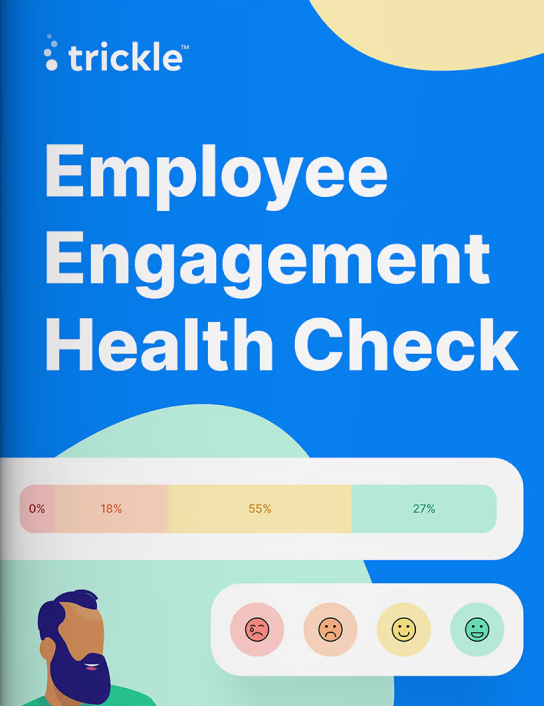How well does your company engage its employees?
Take your health check and find out.


In our latest article we discuss the classic HR issue of there being two sides to every story and managing conflict in the workplace to resolve issues.
However much we try to avoid it, conflict in the workplace is an inevitable consequence of mixing together people with different views, backgrounds and personalities. When people have different solutions to the same problems, they’re bound to disagree.
As an HR professional, it’s ultimately your responsibility to figure out how to resolve workplace conflict in the workplace. It can be quite daunting, as not only will your management of the disagreement affect the employees involved, but it could also affect how others view the organisation as a whole.
A workplace conflict can be a disagreement or disruptive behaviour — anything that gets in the way of employees working effectively. Sometimes workplace conflicts are small and can be resolved by a quick chat and minor compromises. But the bigger issues, those that are causing major anger and frustration, require an HR professional to step in and successfully manage the situation.
At any point when an employee has violated the company’s conduct policies. Your employee handbook should have already laid out the actions to be taken by the company in this event, so you will have the correct processes in place.
In order to successfully resolve a bad situation, start with your company’s conflict processes. Not only will this ensure that everything you’re doing is by the book and following the correct protocols, it should help save the company from any negative consequences and bring about a fair and timely resolution.
It can also be helpful to provide line managers with training on how to resolve conflict in the workplace, as they can often de-escalate situations before they become an HR matter. You could put a system in place where conflicts are first addressed by the parties involved, then include a line manager if required, before finally looping-in HR if required.
Remember — no conflict is too small. An issue that may not bother you could easily prevent another employee from working effectively. That’s why using an employee engagement tool like Trickle is vital in creating a safe environment for staff to voice any concerns before they grow into bigger problems.
If a conflict does escalate, the first step is to get to the root of the issue so that you can begin to understand how it was allowed to worsen. Before you engage in a difficult conversation, it’s best to fully assess the situation and gather all the information you can. This could include talking to other members of the team to better understand what went wrong.
After gathering information about the conflict, find a private place to talk to the individuals involved separately. Privacy will help the employees to open up without fear, allowing for a peaceful and constructive conversation.
Don’t just discuss the issue over email — that can lead to misunderstandings. Face-to-face meetings, whether in person or over video chat, are more productive and help convey the emotional nuance of the situation.
Go into the meetings with an open mind and without your own assumptions or judgements. Staying neutral and listening with impartiality allows you to properly assess the situation.
Emotional situations like these can lead to people bringing all of their frustrations to the fore. Frame each discussion to focus purely on the events of the conflict and try to avoid the conversation going off on a tangent.
Don’t assume your employees’ positions beforehand — let them speak for themselves and express their viewpoints. Actively listen and sympathise with each party, allowing everyone to air their views in an open and honest way. Be positive and assertive, asking your employees what they feel should be done about the situation.
After the meetings have taken place, follow up with other employees to get a fully rounded sense of the situation. Try to find any underlying issues that may not have been brought up.
Providing a solution that everyone is happy with can be a challenge. But start by remembering that all parties ultimately want the same goal — to resolve the issue. By respecting each other and accepting we’re all different, conflicts can be solved through compromise.
Discuss the best ways to reach a resolution. Listen to everyone’s ideas and find common ground. Then you can come up with the solutions that each party will agree to. Ideally, help them come up with their own ideas, as they are more likely to be successful that way.
Be respectful and professional. People don’t like being lectured to. Put yourself in your employees’ shoes and speak to them how you’d like to be spoken to. Help them see the issue from the other person’s perspective to help create a resolution from a place of understanding.
Once the solution is formed, determine the responsibilities that each person has in resolving the conflict.
Continue to check in with everyone involved to see that progress has been made and if they require additional support. Whether the solution was effective or not, you can always take away learnings from the situation and find the hidden opportunities to create a better work environment for all employees:
Trickle gives everyone a voice to share their opinions and make suggestions. By continually involving employees with two-way dialogue, you’ll resolve issues and make improvements naturally.
Trickles are posts that allow staff to raise issues, ask questions and post suggestions. Sometimes it’s tough to speak up. So, Trickle lets people stay anonymous so they can raise concerns or reach out for support in a safe environment.
The MoodSense feature also lets you gauge how people are feeling, giving you an early heads-up about potential conflicts.
With Trickle, you can help prevent workplace conflict and facilitate more effective conflict resolution, so you can achieve a happier and more collaborative workforce.
Get in touch for more information or to book a short 20-minute demo.